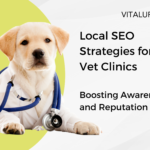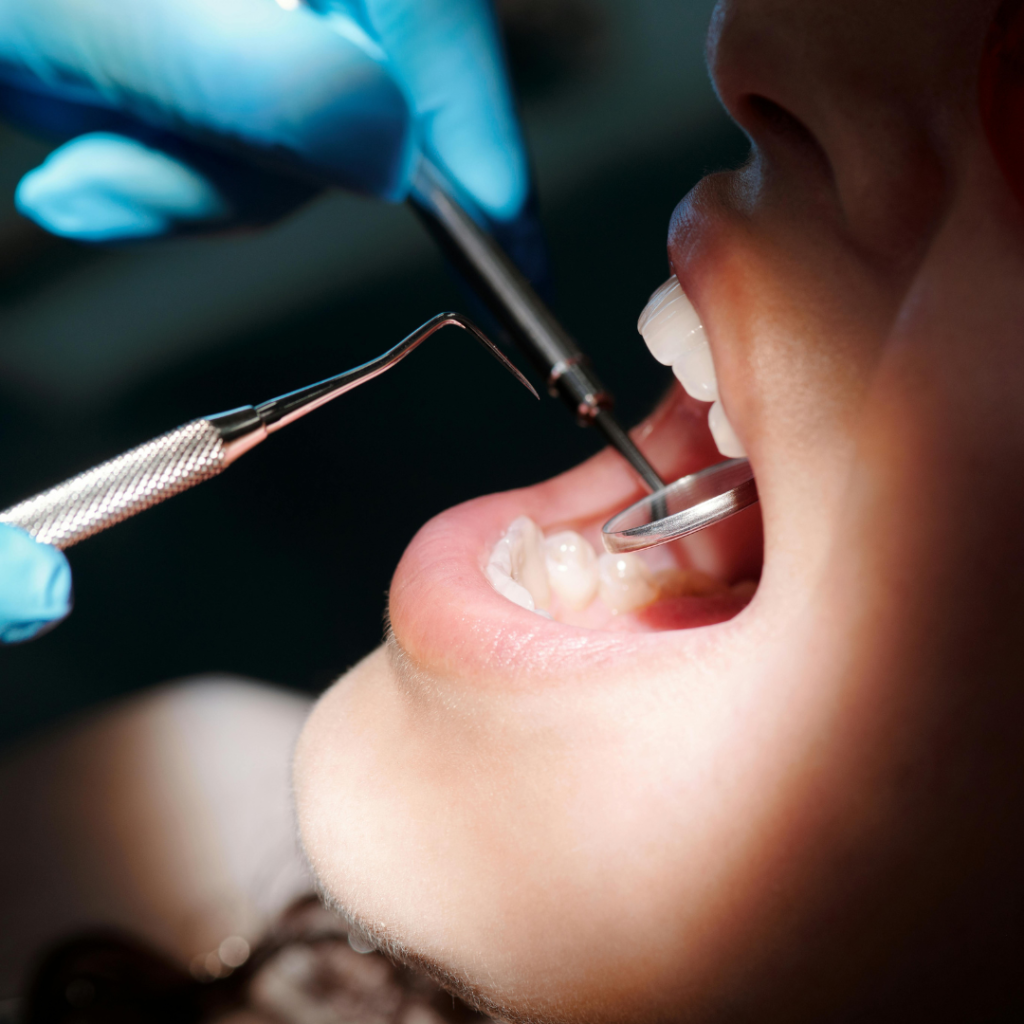
Marketing the Power of Quality Pet Photography
February 13, 2025
SEO for Veterinary Practices: How to Rank Higher and Attract More Pet Owners
February 17, 2025
Attracting new patients is always a challenge. While traditional marketing tools are still valuable, they are just not as effective when the majority of your targeted audience is ever-online.
To truly grow their customer base, dental practices need a robust online presence, and that is where Search Engine Optimization (SEO) comes into play. SEO is a powerful tool for driving organic traffic to your website and turning search engine users into loyal patients.
In this blog, we’ll explore how to attract new Dental patients with effective SEO strategies tailored for dental practices and how VitalUp can help make this process easier.

Step 1: Optimize For Local SEO
Local SEO should be the backbone of your Dental SEO strategies. Here’s how to make sure your Dental practice comes out in a local search.
Claim And Optimize Your Google Business Profile
Google Business Profile (GBP) is a free tool that lets you manage how your business appears on Google Search and Maps.
It is essential to setup your Google Business Profile and make sure that it is complete with the following:
- Accurate business name, address, and phone number referred to as NAP.
- High-quality photos of your practice.
- A list of your services and specializations.
- Business hours and a link to your website.
- Ask patients to leave reviews on your profile, because positive reviews can contribute significantly to your visibility and credibility. This is super important and an easy win due to the familiar nature of Dentists and their patients.
- Tip: Some Dentists will offer discounts or perks to their dental patients in return for a google my business (GBP) review. GBP reviews are now more common than yelp or any other local review websites.
Use Local Keywords
Add location-containing keywords to your website’s meta descriptions, title tags and content. This tells Google that your website is an ideal candidate to rank for queries within certain geographical regions.
- Tip: Use common terms in your area or reference locations that only locals will know and use.
Gather Local Citations
Make sure that your practice is listed in good authoritative local directories such as Yelp, Healthgrades, and dental-specific directories. This will help your practice to get more visibility and aid search engines in verifying your location and services, which are used to rank your website.
- Tip: If you can get other types of doctors to list your site on their websites this will only increase the “link juice” and let google know that your website is important. Examples of these could be: Podiatrists, ENT, Pediatricians, Doctors or Dental colleagues in other states or that you went to university with. Use your network and don’t be afraid to ask. However, if you do request friends or colleagues to place a link to your website make sure you offer the same for them – it’s the right thing to do.
Step 2: Create A Better Performing Website
Your website is often the first point of contact that potential patients have with your practice. SEO strategies include a well-optimized website that is essential for attracting and retaining visitors.
Mobile-Friendly Design
Most users search for local services on their smartphones. Therefore, you must ensure your website is mobile-responsive, meaning it adapts beautifully to different screen sizes. This is now a requirement and not an option. 90% of people are searching on their phones, not on their laptops or PCs, therefore your website must be optimized for Mobile.
Fast Loading Speeds
Slow-loading websites can frustrate visitors and increase your bounce rate. Use tools like GTMetrix or Google PageSpeed Insights to identify and fix issues affecting your site’s speed.
Dedicated Service Pages
Instead of listing all your services on one page, create individual pages for each service. This SEO strategy reduces the chances of “keyword cannibalization” and will enable you to optimize each page for specific keywords, thus improving your chances of ranking for those terms.
Clear Calls-To-Action (CTAs)
- Guide visitors to make an appointment with prominent CTAs.
- Make it easy for them to reach you with visible phone numbers, appointment forms, and live chat options.
- Tip: If you have the ability to offer a discount for a first time customer then DO IT! Dental Patients have a high life time value, giving away a little bit upfront will be peanuts compared to what their spend will be over the lifetime of visits.
Step 3: Content Marketing

Engaging Content Can Help Put Your Practice On The Map
Content marketing is another powerful SEO strategy that works to establish your expertise, build trust, and attract new patients. This can be achieved from many different angles including:
Blog Posts
- Write informative and engaging blog posts on topics your patients care about.
- Use relevant keywords within your posts to enhance SEO.
FAQs
- Develop an FAQ page on your website that answers some of the most common questions.
- FAQs enhance SEO strategies because it answers questions your potential patients will likely look for.
Video Content
- Videos are engaging and highly shareable.
- Consider creating videos that showcase your practice, explain dental procedures, or feature patient testimonials.
Step 4: Leverage Backlinks
SEO strategies often use backlinks, or links from other websites to yours, to signal to search engines that your website is credible and authoritative.
Partner With Local Businesses
Collaborate with businesses in the medical field to exchange backlinks. They can link to your website as a trusted dentist and vice versa.
Guest Blogging
Writing guest blogs, which could be local or dental related can be really helpful in getting your name out there and increasing the authority of your domain. Just make sure to include the link back to your website in the author bio or within the content.
Shareable Content
- Publish high-quality, shareable content like infographics or patient success stories.
- The more your content is shared, the more backlinks you’re likely to earn.
Step 5: Monitor And Improve
SEO strategies are not a one time effort. Regularly monitor your website’s performance and make adjustments as needed.
Use Analytics Tools
Google Analytics and tools like SEMrush can help you track various aspects of your website to further optimize it. Therefore, you can analyze what’s working and where you need improvement.
Regular Updates
- Keep your website fresh and full of content.
- Ensure all the information is correct because search engines love active, current websites.
Answer Reviews
Make sure to respond to patients by answering online reviews, both negative and positive. Communication proves that you respect their opinion and truly care about the patient experience. Moreover, this will build trust and credibility, further attracting patients.

Focus On Your Skill While VitalUp Focuses On Boosting Your Business
Conclusion
Attracting new Dental patients with SEO strategies requires a combination of local optimization, engaging content, and ongoing monitoring. Let VitalUp take this burden off your shoulders with a team of experts who are committed to making your practice visible to any potential client.
SEO can help your practice rank higher in search results and allow you to connect with future patients. However, there are a lot of moving parts to this business that professionals like VitalUp are made for.
SEO isn’t an overnight solution, but with consistent effort, it can become one of the most valuable tools in your marketing arsenal. While you focus on expanding your knowledge and skill base, let VitalUp work on expanding your client base.
Connect with us today!




